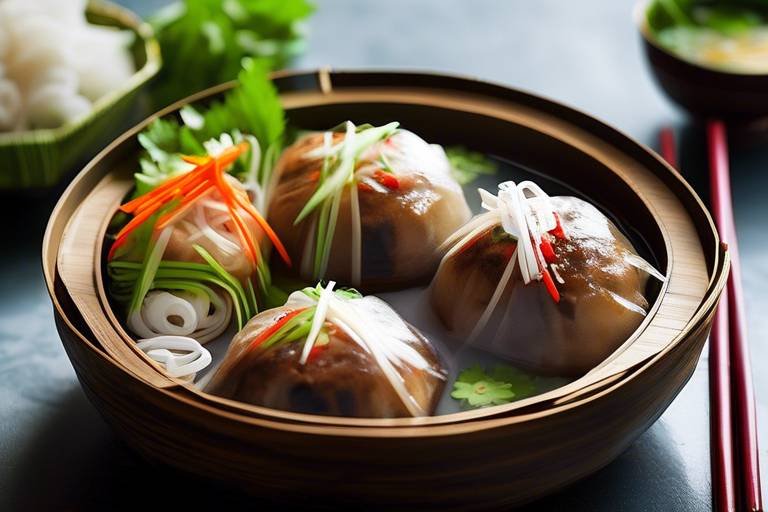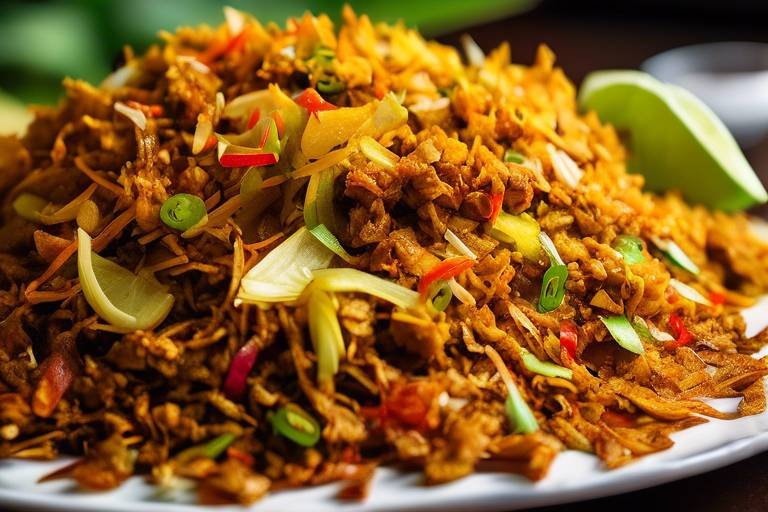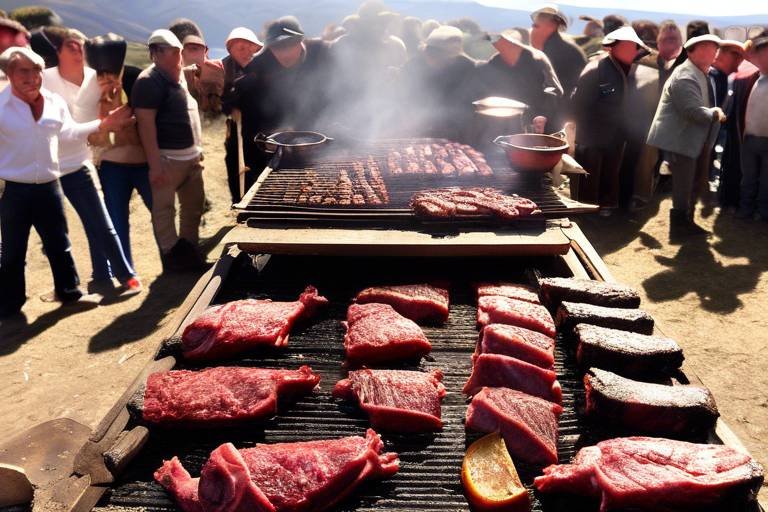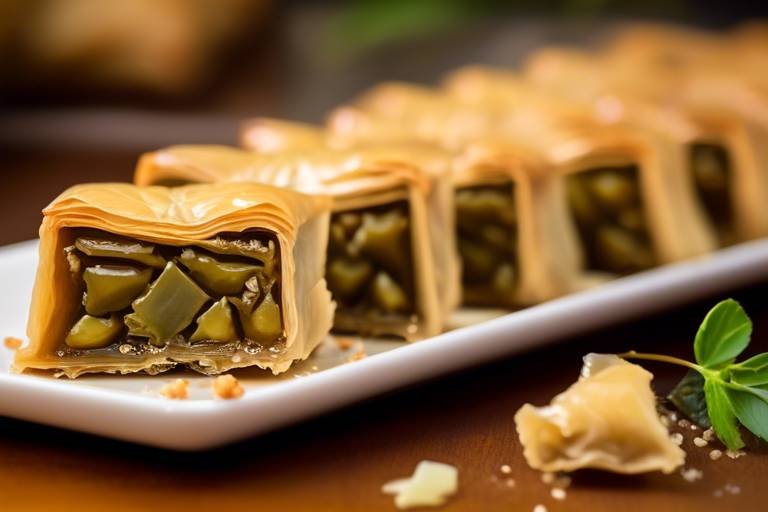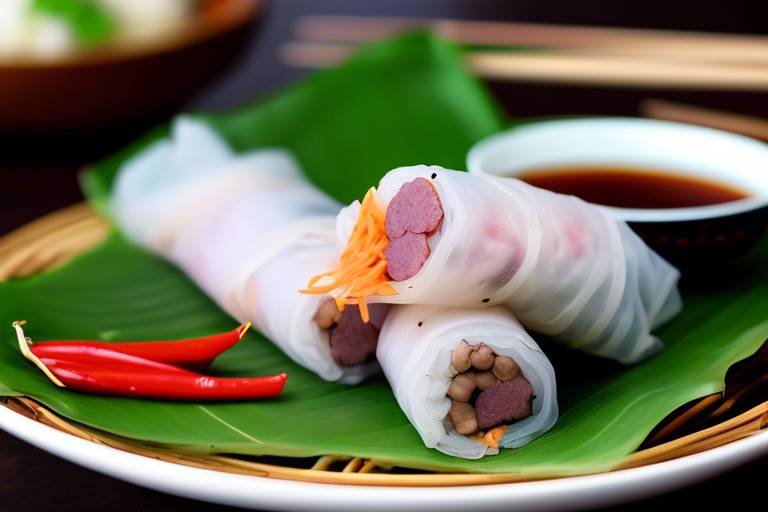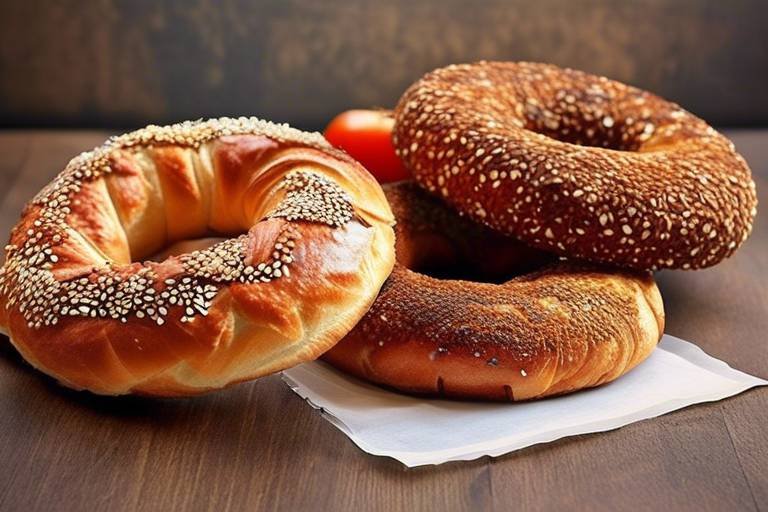Traditional Vietnamese Bun Cha - Recipes and Tips
Are you ready to embark on a culinary journey to Vietnam and savor the delightful flavors of Bun Cha? This traditional Vietnamese dish is a harmonious blend of grilled pork, fragrant rice noodles, fresh herbs, and a tantalizing dipping sauce. Let's dive into the world of Bun Cha and uncover the secrets behind preparing this mouthwatering meal right in your own kitchen.
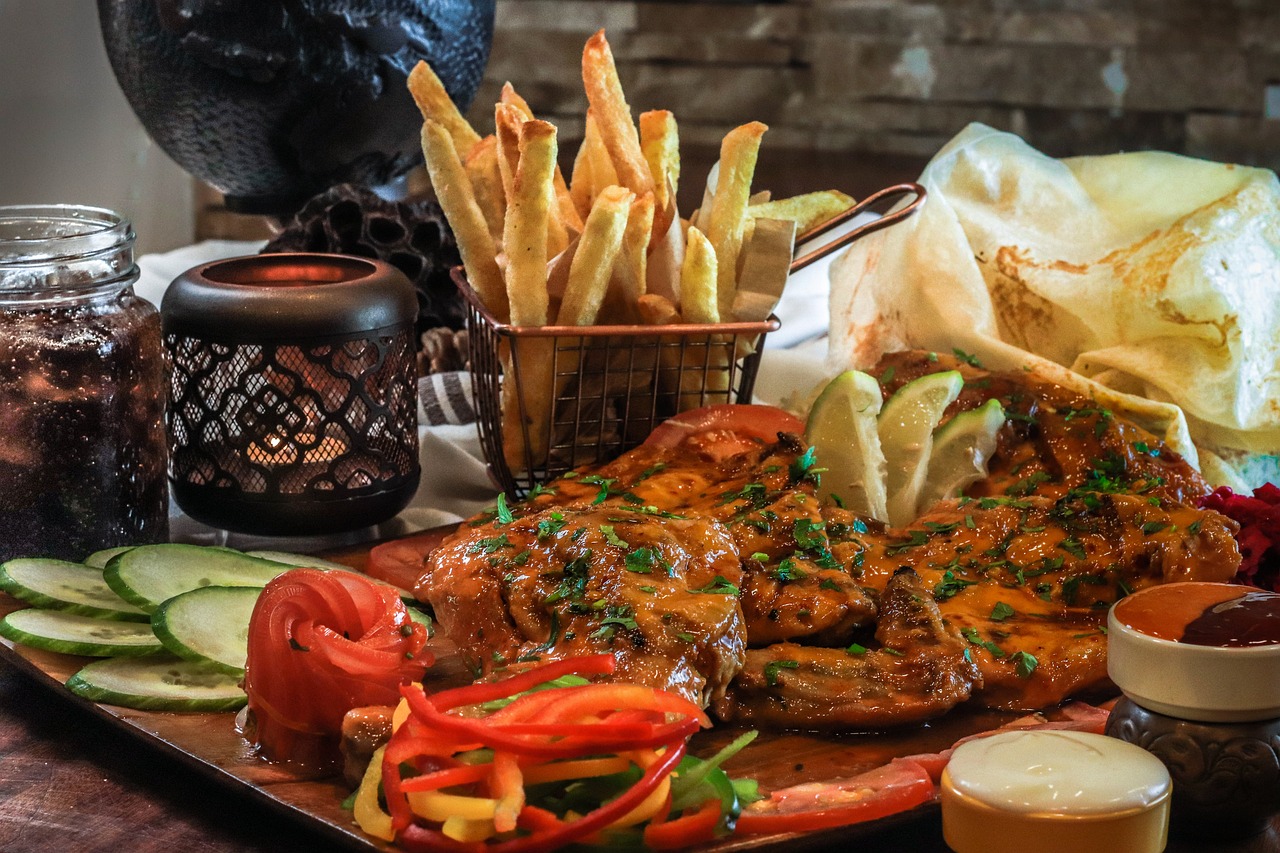
Origin of Bun Cha
Bun Cha, a beloved dish in Vietnamese cuisine, has a rich history that dates back to the bustling streets of Hanoi. Originating in the northern regions of Vietnam, Bun Cha has evolved from a traditional meal to a popular street food enjoyed by locals and tourists alike. The dish is a testament to the culinary heritage of the country, reflecting the flavors and cultural influences that define Vietnamese gastronomy.
The roots of Bun Cha can be traced back to the vibrant markets and narrow alleyways of Hanoi, where vendors would grill marinated pork over charcoal fires, filling the air with tantalizing aromas. Over time, Bun Cha has become a symbol of Vietnamese culinary tradition, with each region adding its own unique twist to the dish, showcasing the diversity of flavors found throughout the country.
As Bun Cha gained popularity, it spread beyond the streets of Hanoi to become a staple in Vietnamese households and restaurants nationwide. The dish's journey from humble beginnings to culinary icon highlights the enduring appeal of its flavors and the cultural significance it holds for the Vietnamese people.
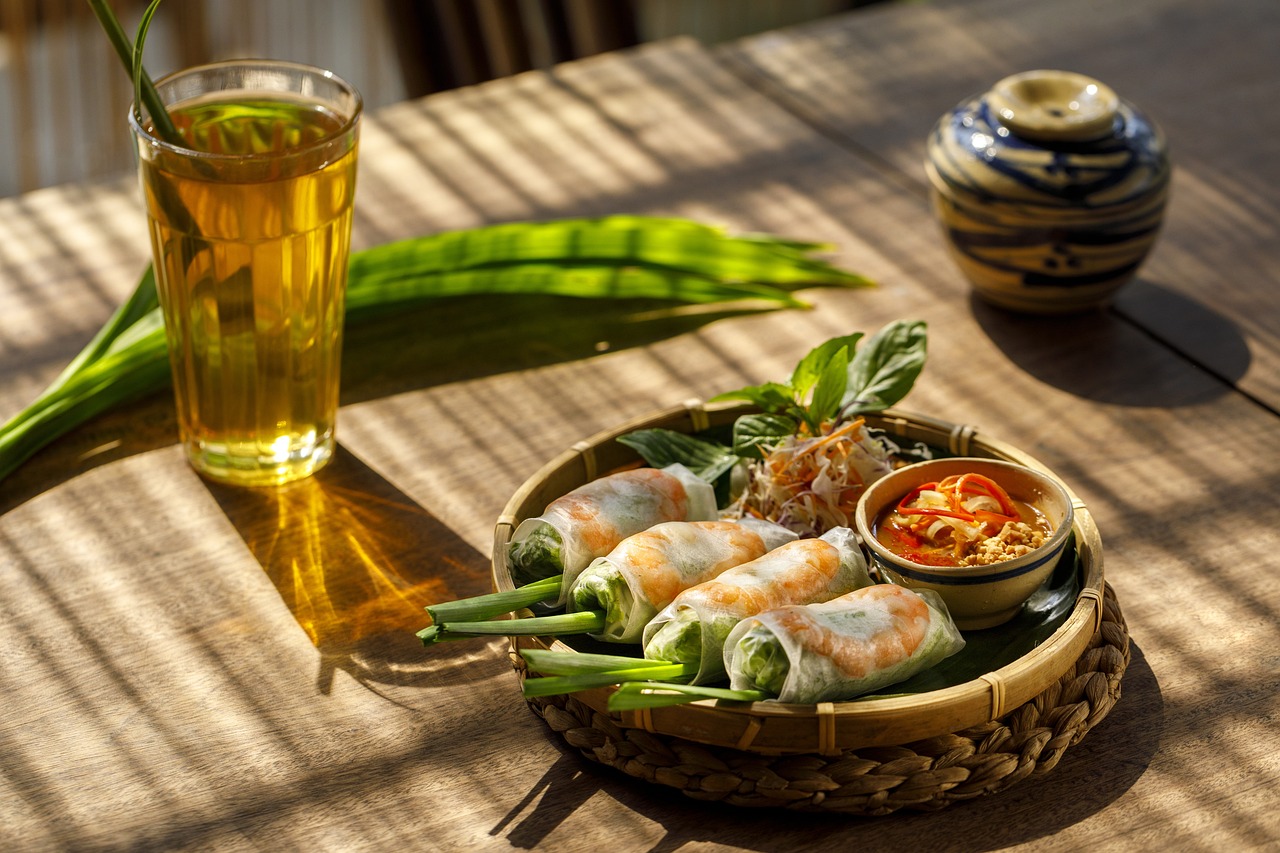
Ingredients for Bun Cha
Bun Cha is a delightful Vietnamese dish that tantalizes the taste buds with its harmonious blend of flavors and textures. To create this culinary masterpiece at home, you will need a selection of essential ingredients that form the foundation of the dish.
The star of the show is the marinated pork, which is the heart and soul of Bun Cha. The pork is typically marinated in a mixture of fish sauce, sugar, garlic, shallots, lemongrass, and black pepper, infusing it with a rich umami flavor and tenderizing the meat for grilling.
Accompanying the succulent pork are rice noodles, which provide a light and delicate base for the dish. These noodles are cooked to perfection, offering a satisfying texture that complements the savory pork and fresh herbs.
No Bun Cha is complete without an array of fresh herbs to add brightness and freshness to each bite. Common herbs used include mint, cilantro, Thai basil, and perilla leaves, which enhance the overall flavor profile of the dish.
To tie everything together, the dipping sauce plays a crucial role in elevating the flavors of Bun Cha. The sauce is a harmonious blend of fish sauce, lime juice, sugar, garlic, chili, and water, creating a perfect balance of sweet, salty, sour, and spicy notes.
When preparing Bun Cha, it's essential to source high-quality ingredients to ensure an authentic and delicious dining experience. Each component plays a vital role in creating the symphony of flavors that make Bun Cha a beloved Vietnamese classic.

Marinating the Pork
Marinating the pork is a crucial step in preparing the flavorful and aromatic Bun Cha dish. The key to achieving the authentic taste lies in the marinade, which infuses the pork with a blend of savory, sweet, and tangy flavors. Traditionally, the pork is marinated in a mixture of fish sauce, sugar, garlic, lemongrass, and black pepper, creating a harmonious balance of seasonings.
The marinating process involves allowing the pork to soak in the marinade for at least a few hours, or ideally overnight, to ensure that the flavors penetrate the meat thoroughly. This allows the pork to tenderize and absorb the rich marinade, resulting in a succulent and flavorful outcome when grilled.
To enhance the tenderness of the pork, some recipes may include pineapple juice or rice vinegar in the marinade, which helps break down the meat fibers and add a subtle sweetness to the dish. Additionally, shallots or onions are often used to add depth of flavor to the marinade, complementing the other seasonings.
When marinating the pork, it is essential to ensure that each piece is coated evenly with the marinade to guarantee consistent flavor throughout the dish. The marinated pork is then ready to be grilled to perfection, imparting a smoky charred aroma that enhances the overall taste of the Bun Cha.

Preparing the Dipping Sauce
When it comes to for traditional Vietnamese Bun Cha, attention to detail is key in achieving that perfect balance of flavors that complements the dish harmoniously. The dipping sauce serves as a crucial component that ties together the elements of Bun Cha, enhancing the overall dining experience with its tangy and savory notes.
To create the signature dipping sauce for Bun Cha, you will need a combination of fish sauce, lime juice, sugar, garlic, and chili. Each ingredient plays a vital role in contributing to the complex and delicious taste profile of the sauce. The fish sauce provides a rich umami flavor, while the lime juice adds a refreshing citrusy tang.
Start by mixing the fish sauce and sugar in a bowl until the sugar is completely dissolved. This step is crucial to ensure that the sweetness is evenly distributed throughout the sauce. Next, add in the minced garlic for a pungent kick and the chopped chili for a subtle heat that elevates the overall flavor profile.
Once the base of the sauce is prepared, taste and adjust the flavors according to your preference. You can add more lime juice for extra acidity, sugar for sweetness, or chili for heat, depending on your taste buds. Remember, the key is to strike a delicate balance that complements the other components of Bun Cha.
For those who prefer a spicier kick, you can increase the amount of chili or even add a dash of sriracha for an extra punch of heat. Experimenting with the ingredients allows you to customize the dipping sauce to suit your personal taste preferences, making each bowl of Bun Cha a unique culinary experience.
Once the dipping sauce is prepared to your liking, let it sit for a while to allow the flavors to meld together and intensify. This resting period allows the ingredients to harmonize, creating a cohesive and flavorful sauce that enhances the overall enjoyment of Bun Cha.

Grilling Techniques
When it comes to mastering the art of Bun Cha, perfecting the grilling techniques is essential to achieving that authentic smoky flavor and tender texture. The key lies in the process of grilling the marinated pork to perfection, ensuring that each bite is a burst of savory goodness.
One crucial aspect of grilling the pork for Bun Cha is achieving a balance between a smoky charred exterior and juicy, tender meat on the inside. This requires careful attention to the grilling temperature and time, as well as the distance between the pork and the heat source.
Traditionally, Bun Cha pork is grilled over a charcoal fire, imparting a distinct smokiness to the dish. The pork should be cooked slowly and turned regularly to ensure even cooking and caramelization of the marinade, resulting in a flavorful crust.
Another important tip is to avoid overcooking the pork, as this can lead to dry and tough meat. The goal is to cook the pork just until it reaches the perfect level of doneness, preserving its juiciness and tenderness.
To enhance the grilling process, you can also consider adding aromatic elements such as lemongrass or shallots to the charcoal fire, infusing the pork with additional layers of flavor as it cooks.
Ultimately, the key to mastering the grilling techniques for Bun Cha lies in patience, attention to detail, and a deep appreciation for the smoky, savory flavors that define this beloved Vietnamese dish.
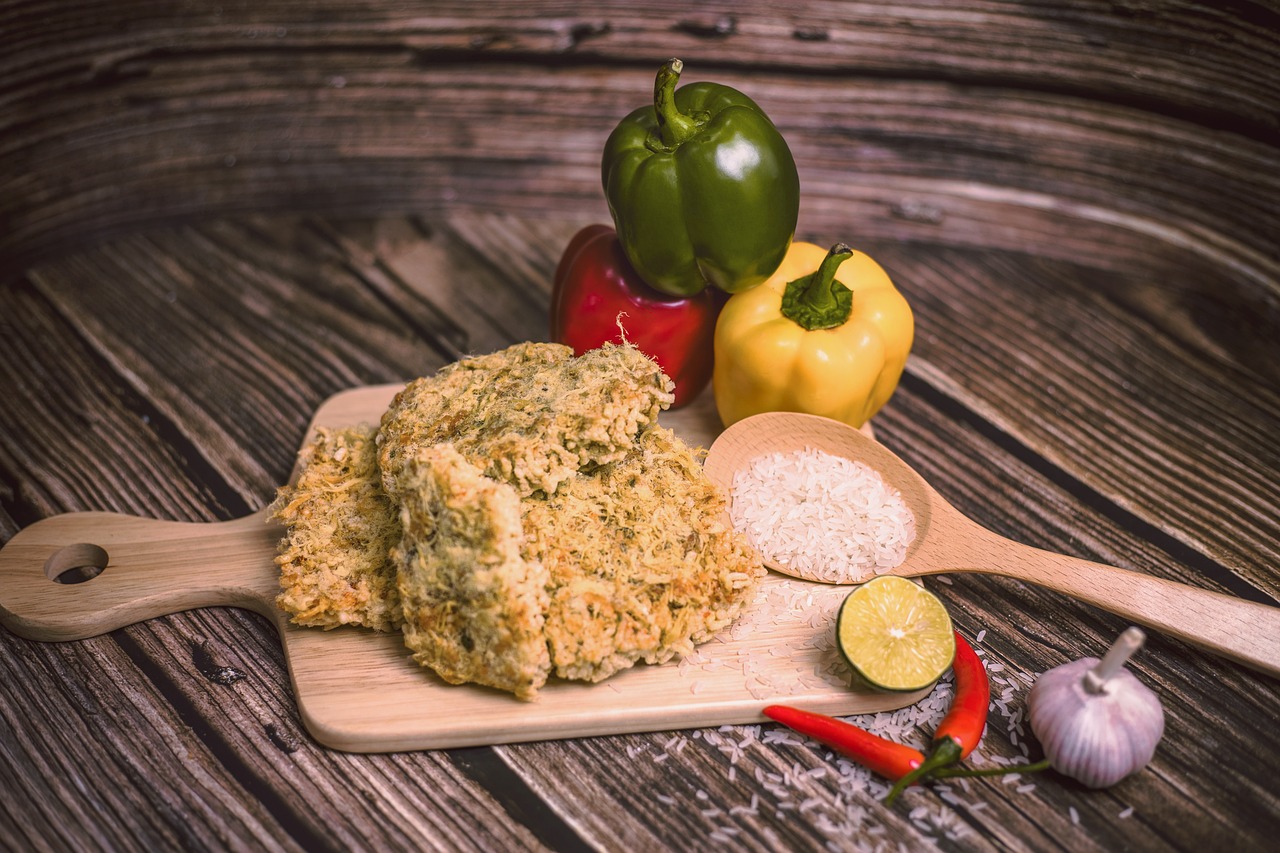
Serving and Presentation
When it comes to serving and presenting Bun Cha, attention to detail is key to truly capturing the essence of this traditional Vietnamese dish. The art of presenting Bun Cha involves more than just placing the components in a bowl; it's about creating a visually appealing and appetizing experience for the diner.
Start by arranging the components thoughtfully in a bowl - the grilled pork, rice noodles, and fresh herbs like mint and cilantro should be placed in a harmonious manner, allowing each element to shine through. Consider the colors and textures of the ingredients to create an enticing visual contrast that is as pleasing to the eyes as it is to the palate.
Garnishing plays a crucial role in enhancing the presentation of Bun Cha. Sprinkle additional herbs on top of the bowl to add a pop of freshness and color. A squeeze of lime juice over the dish not only elevates the flavors but also adds a vibrant touch to the overall presentation. Remember, presentation is not just about how the dish looks but also about how it makes you feel.
When serving Bun Cha, don't forget the side of dipping sauce and pickled vegetables. These accompaniments are essential to the overall dining experience, providing contrasting flavors and textures that complement the main components of the dish. Place the dipping sauce in a small dish beside the bowl, allowing diners to customize the flavor according to their preference.
Ultimately, serving and presenting Bun Cha is a celebration of Vietnamese culinary heritage and a sensory experience that engages sight, smell, and taste. By paying attention to the details and embracing the traditional way of serving this dish, you can transport yourself to the bustling streets of Hanoi and savor the authentic flavors of Bun Cha right in your own home.
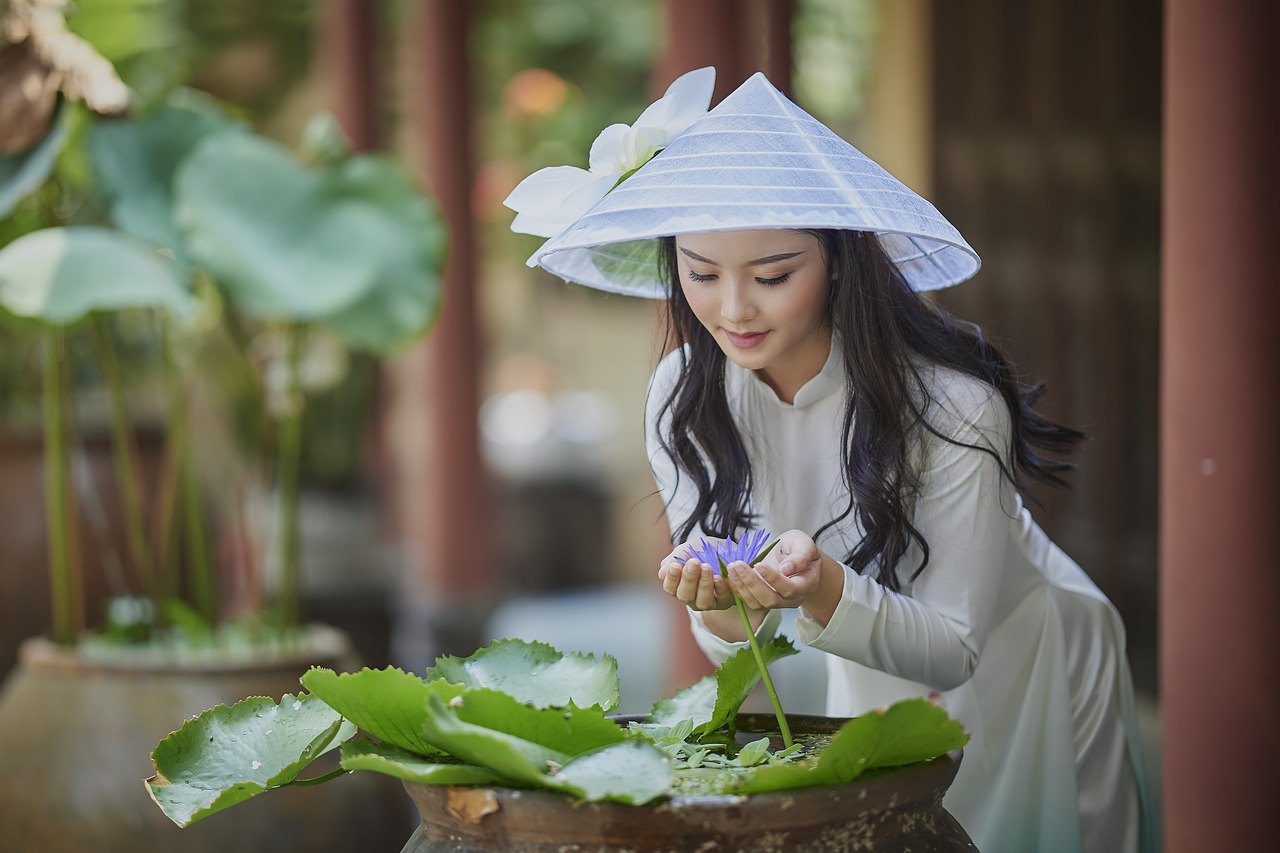
Variations and Regional Differences
When it comes to Bun Cha, a dish deeply rooted in Vietnamese culinary tradition, the variations and regional differences offer a fascinating glimpse into the diverse flavors of the country. From the bustling streets of Hanoi to the serene countryside, each region puts its unique twist on this beloved dish, making it a culinary adventure worth exploring.
In the northern region of Vietnam, particularly in Hanoi where Bun Cha originated, the dish is typically made with grilled pork patties served in a broth-like sauce alongside rice noodles and fresh herbs. The emphasis here is on the simplicity of flavors, allowing the quality of the pork and the freshness of the herbs to shine through.
As you venture further south, you may encounter variations of Bun Cha that incorporate different types of meat such as grilled chicken or even seafood. These adaptations reflect the diverse culinary influences present in the central and southern regions of Vietnam, where flavors tend to be bolder and more complex.
Regional differences also extend to the accompaniments served with Bun Cha. In some areas, you might find pickled vegetables or crispy spring rolls alongside the dish, adding contrasting textures and flavors to the meal. Each region takes pride in its unique approach to Bun Cha, showcasing the rich tapestry of Vietnamese cuisine.
Whether you prefer the traditional simplicity of Hanoi-style Bun Cha or the innovative twists found in other regions, exploring the variations and regional differences of this iconic dish is a delightful journey through the vibrant culinary landscape of Vietnam.
Frequently Asked Questions
- What is Bun Cha?
Bun Cha is a traditional Vietnamese dish consisting of grilled pork served with rice noodles, fresh herbs, and a tangy dipping sauce. It is a popular street food in Vietnam known for its flavorful combination of ingredients.
- What are the key ingredients in Bun Cha?
The essential components of Bun Cha include marinated pork, rice noodles, fresh herbs such as mint and cilantro, and a dipping sauce made with fish sauce, lime juice, sugar, garlic, and chili. These ingredients come together to create a harmonious blend of flavors.
- How is the pork marinated for Bun Cha?
The pork for Bun Cha is marinated using a mixture of ingredients like fish sauce, sugar, garlic, and shallots to infuse it with flavor before grilling. The marination process is crucial in ensuring that the pork is tender and aromatic when cooked.
- What are the different variations of Bun Cha?
Bun Cha can vary regionally in Vietnam, with differences in the type of meat used, the flavor profiles of the dipping sauce, and the accompaniments served alongside the dish. These variations reflect the diverse culinary traditions across the country.

